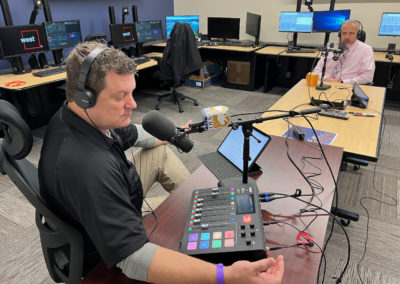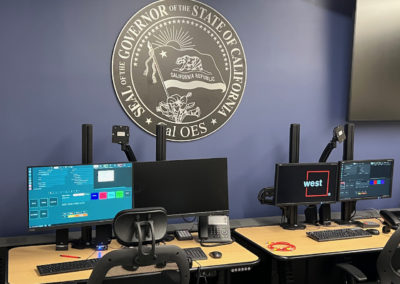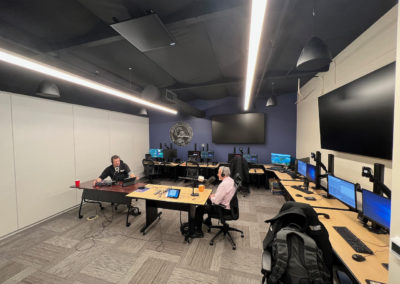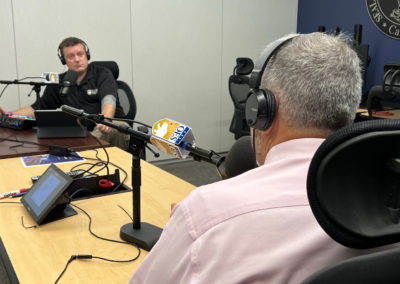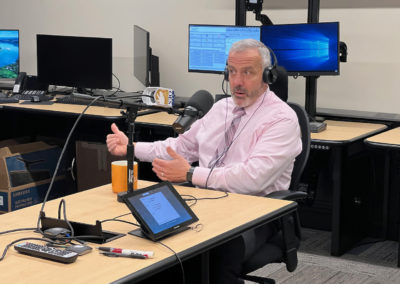This episode (#90) brings us up to speed on Next Generation 911.
911.gov explains: “Because most 911 systems were originally built using analog rather than digital technologies, public safety answering points (PSAPs) across the country need to be upgraded to a digital or Internet Protocol (IP)-based 911 system, commonly referred to as Next Generation 911 (NG911).
A variety of non-technical resources are available to help explain what NG911 is and how it will help public safety leaders improve the safety of civilians, patients and first responders. Learn more about how the transition to Next Generation 911 will impact EMS, fire and law enforcement communities here.
The success and reliability of 911 will be greatly improved with the implementation of NG911, as it will enhance emergency number services to create a faster, more resilient system that allows voice, photos, videos and text messages to flow seamlessly from the public to the 911 network.
NG911 will also improve PSAP ability to help manage call overload, natural disasters, and transferring of 911 calls and proper jurisdictional responses based on location tracking.
While the technology to implement these new IP-based 911 systems is available now, the transition to NG911 will involve much more than just new computer hardware and software. Implementing NG911 in states and counties nationwide will require the coordination of a variety of emergency communication, public safety, legislative and governing entities.”
The California 9-1-1 Emergency Communications Branch remains focused on enabling Public Safety Answering Points (PSAPs) to provide the fastest, most reliable, and cost-effective access to emergency services for any 9-1-1 caller in California from any communications device.. While the existing 9-1-1 system has been a success story for more than 40 years, it has been stretched beyond its limit. The current 9-1-1 system is unable to efficiently integrate with today’s newer technologies and lacks the reliability and monitoring capabilities needed to support today’s increased disaster environment. Due to the aging technology of today’s 9-1-1 system, the number of outages continues to increase and the existing 9-1-1 system is becoming less and less reliable.
There is an urgent need to transform California’s legacy 9-1-1 system into a Next Generation 9-1-1 (NG9-1-1) system. Modernizing California’s outdated 9-1-1 funding formula is crucial to protecting our 9-1-1 system. The CA Legislature approved SB 96 / AB 96 which provides the updated State Emergency Telephone Number Account (SETNA) funding model that will provide the revenue needed to implement NG9-1-1.
NG9-1-1 will provide multi-layered redundancy and a common technology platform for alerts and warnings. The advantages of NG9-1-1 include:
- Allow agencies to re-route 9-1-1 calls to each other during disasters
- Increase resiliency by hardening the system to withstand natural and human-caused disasters
- Provide a statewide common technology delivery system for Alerts and Warnings
- Ensure emergency calls are quickly and accurately delivered – in 3 seconds or less
- Support text to 9-1-1 delivery into the PSAP
- Deliver increased location accuracy for wireless calls
- Allow agencies to utilize state of the art mapping in order to better locate callers
- Integrate with First Responder Network Authority nationwide wireless broadband network initiative
- Reduce 9-1-1 system downtime. 9-1-1 outages are an ongoing problem with the aging infrastructure currently being used in California
Since the CA 9-1-1 Branch first published the proposed California NG9-1-1 Roadmap in 2010, significant progress has been made to implement NG9-1-1 in California. The CA 9-1-1 Branch successfully implemented several NG9-1-1 pilot projects; the most significant of these are in Northeast California with 36 PSAPs and the Pasadena RING project in LA County with 8 PSAPs. The CA 9-1-1 Branch also met representatives from nearly every PSAP in the state, the originating service providers, and the vendor community to develop the NG9-1-1 implementation plan.


